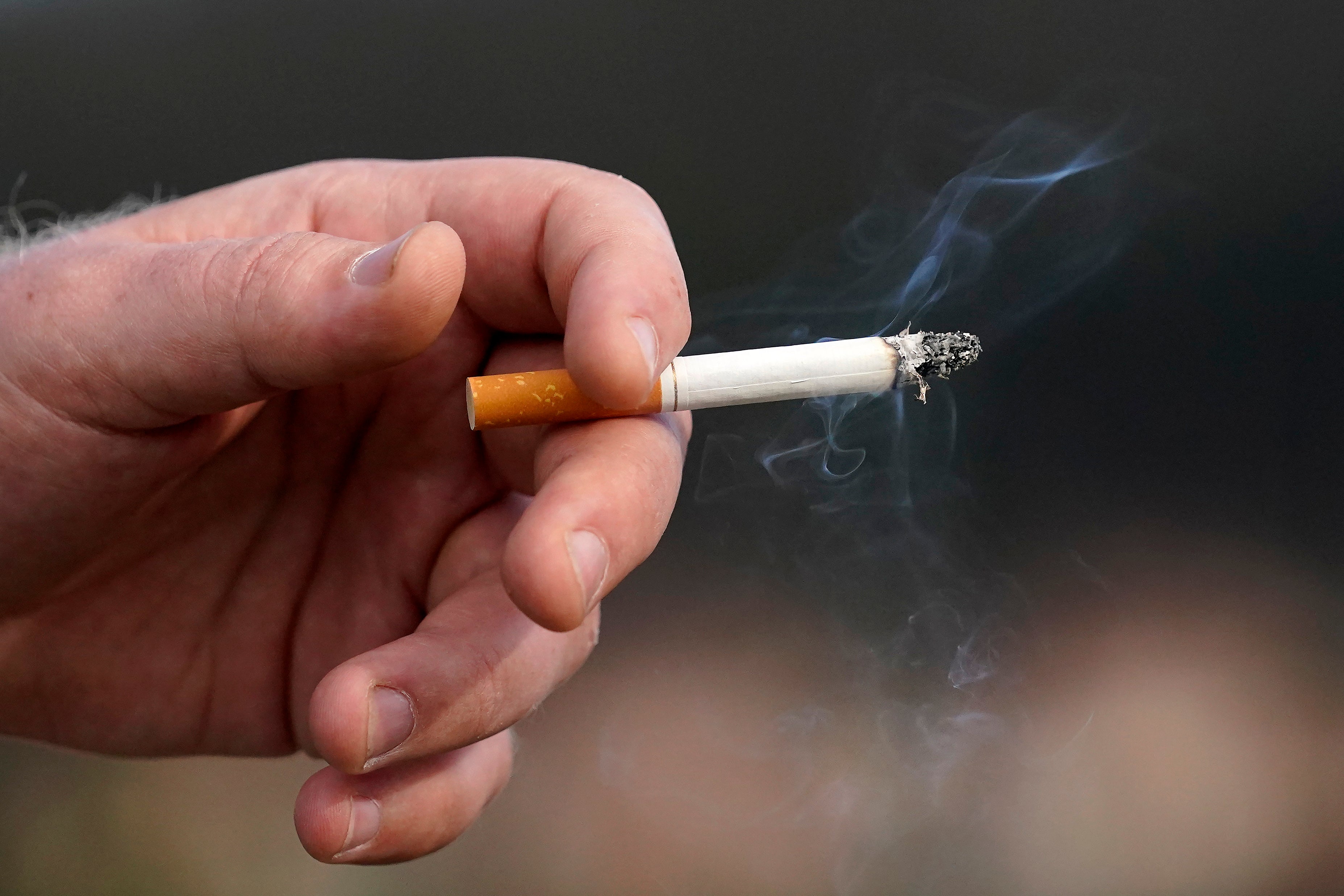FDA floats plan to make cigarettes nonaddictive, but its fate rests with Trump
The Biden administration is floating a long-awaited proposal to make cigarettes less addictive by capping their nicotine levels

Your support helps us to tell the story
From reproductive rights to climate change to Big Tech, The Independent is on the ground when the story is developing. Whether it's investigating the financials of Elon Musk's pro-Trump PAC or producing our latest documentary, 'The A Word', which shines a light on the American women fighting for reproductive rights, we know how important it is to parse out the facts from the messaging.
At such a critical moment in US history, we need reporters on the ground. Your donation allows us to keep sending journalists to speak to both sides of the story.
The Independent is trusted by Americans across the entire political spectrum. And unlike many other quality news outlets, we choose not to lock Americans out of our reporting and analysis with paywalls. We believe quality journalism should be available to everyone, paid for by those who can afford it.
Your support makes all the difference.Federal officials on Wednesday released a far-reaching proposal to make cigarettes less addictive by capping their nicotine content, a goal long sought by antismoking advocates that is unlikely to go into effect anytime soon.
The proposed rule from the Food and Drug Administration comes in the final days of President Joe Biden’s term, greatly reducing the likelihood that it will actually be enacted. President-elect Donald Trump and his health nominees have not commented on the measure, but a similar effort led by Trump’s first FDA commissioner, Dr. Scott Gottlieb, was sidelined during his first term.
Trump’s health secretary nominee, Robert F. Kennedy Jr., has said little about how regulating tobacco fits into his plans to overhaul the government's approach to fighting chronic disease. Even if the effort goes ahead under Trump, tobacco companies like Reynolds American and Altria are almost certain to challenge it in court, delaying implementation.
The FDA has spent years studying the issue and said Wednesday that reducing nicotine would help nearly 13 million current smokers quit cigarettes within one year. Roughly 48 million more young people would never take up the habit because cigarettes would essentially become nonaddictive, according to agency projections.
Under the agency's plan, nicotine would be capped at levels that “could no longer create and sustain this addiction among people who smoke.” The agency's 334-page analysis was posted online in the federal register Wednesday morning.
Antismoking advocates overwhelmingly back the idea and urged Kennedy to help implement it, if he is confirmed.
“Tobacco regulation is a huge part of reaching the goals he’s outlined for reducing chronic disease and a really important part of the conversation we need to have in this country,” said Chrissie Juliano of the Big Cities Health Coalition, which represents the heads of more than 30 metropolitan health departments
Smoking causes more than 480,000 U.S. deaths each year due to cancer, heart disease, stroke and other smoking-related illnesses. Those conditions often take decades to develop and remain elevated today despite ongoing declines in smoking among adults and teenagers.
The idea of limiting nicotine has its roots in sweeping powers given to the FDA by Congress in 2009 to regulate the tobacco industry. But the FDA’s efforts on nicotine and a host of other tobacco measures — such as adding graphic warning labels to cigarette packs — have been hampered for years by tobacco industry lawsuits.
Under the law, FDA regulators can regulate nicotine but they cannot remove it completely. The agency's ability to set a maximum nicotine threshold is unique worldwide and the attempt would represent a first in global efforts to reduce smoking-related deaths.
Currently, there are no U.S. limits on nicotine, which occurs naturally in tobacco plants. There are several techniques for removing it, including chemical extraction and cross-breeding plants.
The FDA formally announced it would begin work on the proposed rule in 2022 and regulators received thousands of public comments from tobacco companies, retailers, health experts and consumers.
The latest FDA announcement comes as smoking in the U.S. continues to fall. Last year, the smoking rate hit another all-time low of just 1 in 9 adults saying they currently smoke.
Low-nicotine cigarettes are not a new idea. Several companies, including Philip Morris, experimented with selling the products during the 1980s and 1990s, without much success. In 2019, the FDA authorized a cigarette that contains 95% less nicotine than standard cigarettes.
The FDA has sponsored studies showing that when smokers switch to very low nicotine cigarettes they smoke less and are more likely to try quitting. That research is considered pivotal to establishing that smokers won’t compensate by just smoking more cigarettes or inhaling more deeply. That was sometimes the case with “light” and “low tar” cigarettes marketed in decades past. Those products were subsequently banned as misleading.
___
The Associated Press Health and Science Department receives support from the Howard Hughes Medical Institute’s Science and Educational Media Group. The AP is solely responsible for all content.